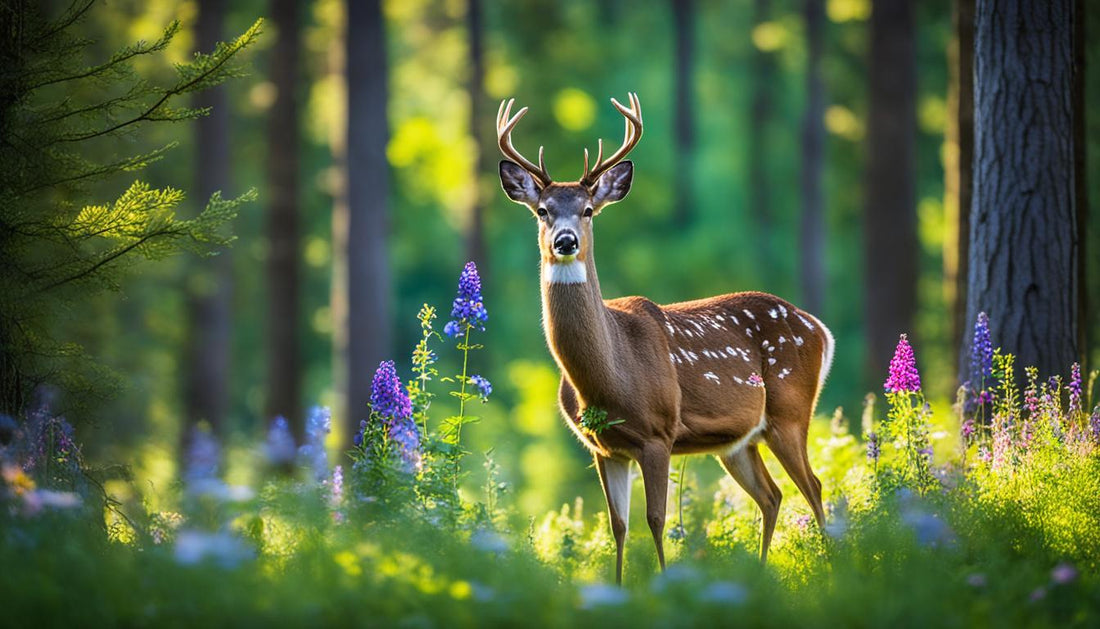Are Clematis Deer Resistant?
If you’re a gardener or plant enthusiast looking to add beauty to your outdoor space, you might be considering planting clematis. Known for their stunning flowers and climbing vines, clematis is a popular choice among gardeners. But if you live in an area with deer, you might be wondering: Are clematis deer resistant?
In this article, we’ll explore whether clematis plants are typically avoided by deer, which varieties are most likely to resist deer, and how to protect your clematis vine from potential damage.
Why Are Deer Less Likely to Eat Clematis?
Deer are generally less attracted to clematis vines than other garden plants, primarily due to the plant's slightly toxic nature and its bitter taste. Unlike many other garden flowers, clematis flowers are not the first choice for deer because of their tough, fibrous texture. In general, clematis vines are not highly palatable, which is why many gardeners use them in deer-prone areas.
However, it’s important to note that while clematis plant species tend to be less appealing, deer might still nibble on the plant if they’re hungry or if their usual food sources are scarce.
Which Clematis Varieties Are Most Deer-Resistant?
While no plant is entirely immune to deer, some clematis vine plant varieties are more resistant than others. If you’re looking for varieties that are less likely to attract deer, consider the following:
-
Clematis Montana: Known for its robust growth and fragrant white flowers, clematis montana is often avoided by deer because of its slightly bitter taste and dense foliage. This variety is perfect for creating a lush backdrop while also deterring wildlife.
-
Clematis Armandii: This evergreen variety produces fragrant white blooms in the spring. Deer are typically less attracted to this variety due to its leathery leaves and strong scent, making it a great choice for year-round garden interest.
-
Clematis Jackmanii: One of the most popular clematis flower plants, clematis jackmanii has large, showy purple flowers. Deer tend to shy away from this variety, likely due to its thicker, less palatable foliage.
-
Sweet Autumn Clematis: This late-blooming variety is often less favored by deer, as it tends to be more robust and less tender than other varieties.
-
Clematis Viticella: A hardy, fast-growing variety, clematis viticella produces vibrant purple, red, and pink blooms. Its tough, climbing habit and relatively bitter foliage make it unattractive to deer.
-
Clematis Virginiana (Virgin's Bower): This native variety of clematis vine grows well in many climates and offers a more rugged appearance that deer tend to avoid.
How to Protect Your Clematis from Deer
Even if you have a clematis plant that is somewhat resistant to deer, it's still important to take some preventative measures to keep deer from damaging your plants. Here are some ways to protect your clematis flower plant:
-
Plant Your Clematis on a Trellis: Growing clematis climbing plants on a clematis trellis or other structures can help keep them out of reach of deer. These plants thrive when given support to grow vertically, and placing them off the ground makes it harder for deer to access them.
-
Use Deer Repellents: If you notice deer browsing on your clematis vine, you can use natural or commercial repellents to discourage them. Spraying the leaves and stems of your clematis with a deer-repelling solution can keep them at bay.
-
Physical Barriers: Installing deer fencing around your garden or wrapping your clematis plants with mesh can protect them from hungry deer.
-
Planting Deer-Resistant Companions: Surround your clematis flower with other plants that deer avoid, such as lavender, rosemary, or daffodils, to help deter them from browsing on your clematis.
Are Clematis Plants for Sale Deer-Friendly?
If you’re purchasing clematis plants for sale, it’s important to consider the deer resistance of the varieties being offered. Many garden centers and online retailers list clematis varieties that are more resistant to deer. Some varieties, like clematis montana, clematis armandii, and clematis jackmanii, are often advertised as less attractive to deer, making them ideal choices for gardens in deer-prone areas.
When shopping for clematis, look for those varieties that are known to have tougher leaves, stronger scents, and more fibrous growth, as these are less likely to be browsed by deer. Be sure to check local gardening resources or ask the seller for advice on which clematis vine will best suit your deer control needs.
What to Do If Deer Damage Your Clematis Plants
In the event that deer do manage to damage your clematis plant, don’t panic. While the damage may be noticeable, clematis is typically resilient and can bounce back. Here are a few tips:
-
Prune Damaged Vines: Trim back any damaged or chewed stems to encourage fresh growth. Trimming a clematis after deer damage can help revitalize the plant and improve its shape.
-
Monitor Growth: Keep an eye on your clematis after the deer visit. With proper care, such as consistent watering and feeding, the plant should recover and continue to grow.
Conclusion: Enjoying Clematis in Deer-Prone Areas
While clematis vines and clematis flowers may not be the first choice for deer, it’s still important to consider protective measures, especially in areas where deer populations are high. Choosing deer-resistant varieties, such as clematis montana, clematis armandii, and clematis jackmanii, and employing strategies like using a clematis trellis or repellents can help keep your clematis vine plant flourishing.
By understanding the nature of clematis plants and how to protect them from wildlife, you can enjoy the beauty and charm they bring to your garden. Whether you’re purchasing clematis for sale or growing clematis plant varieties at home, these plants are a stunning addition to any landscape, providing color, texture, and interest year-round.





